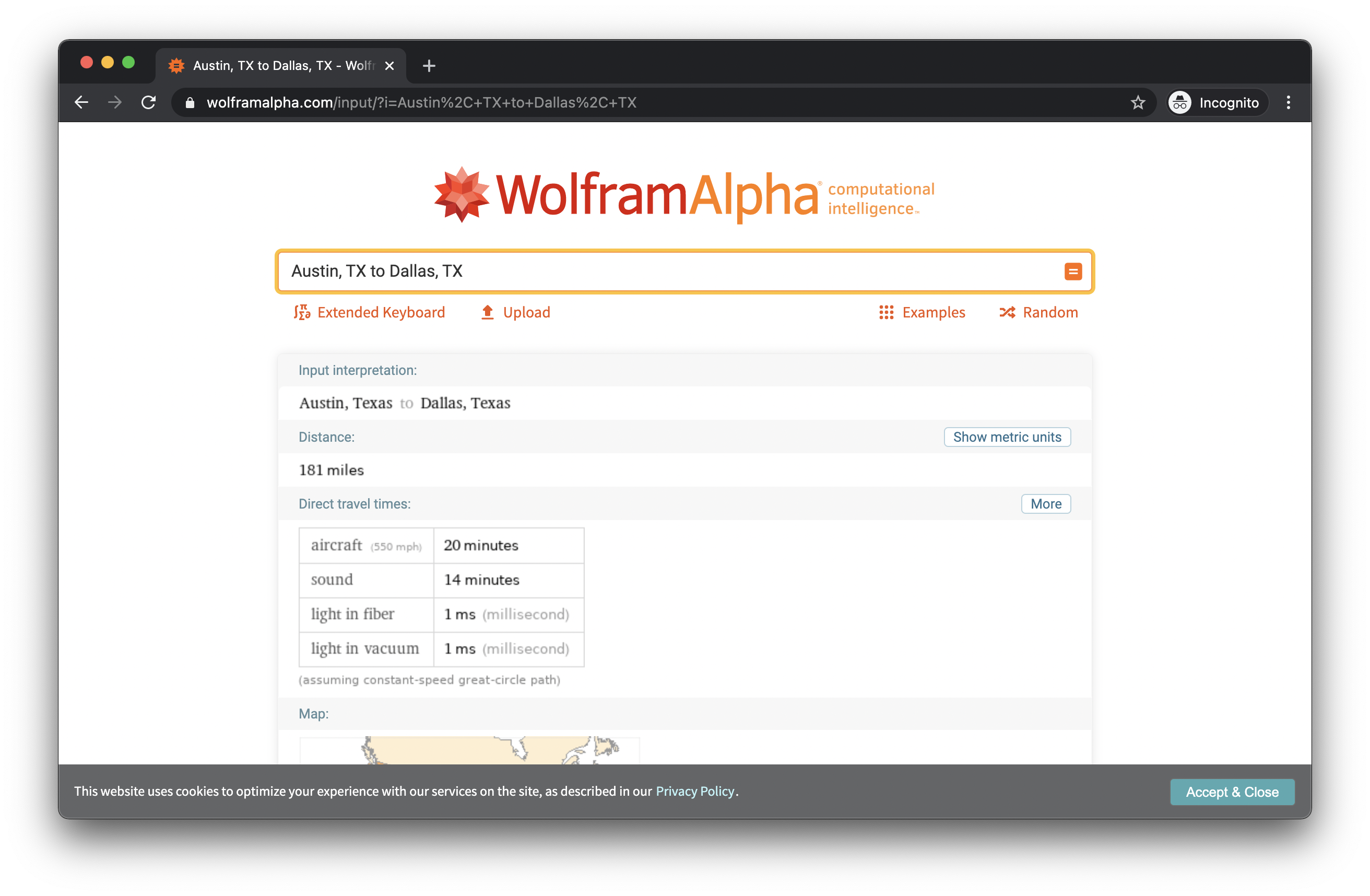I don’t have a great intuition for expected network latency so I did some experiments on comparing network latency between Austin, TX and other locations.
A good starting point seemed like finding a reasonable estimate for the best possible latency. Wolfram Alpha will show straight line travel times using the speed of light in fiber between two locations which gives a useful lower bound for estimating latency. No network traffic traveling from e.g. Austin to Dallas would beat the speed of light traveling through a fiber line so we could assume that a packet from Austin to Dallas would take at least 1ms for each leg of the trip.
Vultr has a list of hostnames that correspond to specific locations
here
so we can also see what the actual RTT
would be. A mtr run on an older Raspberry Pi B+ hooked up to my home router
in Austin shows latency of 9.7ms on average.
$ mtr tx-us-ping.vultr.com -rwc 25
Start: 2021-03-28T19:39:35+0100
HOST: raspberrypi Loss% Snt Last Avg Best Wrst StDev
<snip>
12.|- 108.61.224.175.vultr.com 0.0% 25 9.9 9.7 8.5 11.1 0.5
I repeated this process a few times for various Vultr servers. All times use
Austin as a source. I used mtr $VULTR_HOST -rwc 25 for each test.
| Destination | Light in fiber (ms) | mtr Average (ms) |
|-------------+---------------------+------------------|
| Dallas | 1 | 9.7 |
| Atlanta | 6 | 25.4 |
| Chicago | 7 | 37.4 |
| Miami | 8 | 45.6 |
| Los Angeles | 9 | 35.8 |
| Santa Clara | 11 | 42.4 |
| New Jersey | 11 | 39.1 |
| Seattle | 13 | 56.2 |
| London | 37 | 113.0 |
| Amsterdam | 38 | 123.3 |
| Frankfurt | 40 | 123.1 |
| Sydney | 64 | 192.4 |
The light in fiber travel times from Wolfram Alpha are for a single leg of the trip so it seems like a reasonable approximation to expect a 4.8x to 1.5x increase in latency from the best case estimate.
I assume at closer distances last mile problems are more prominent as the 4.8x increase is a bit of an outlier. Ignoring Dallas results, the latency multiple is in the 1.5x-2.5x range.
This isn’t the exact script I used for the data above but you could test this yourself using this bash script I wrote.
